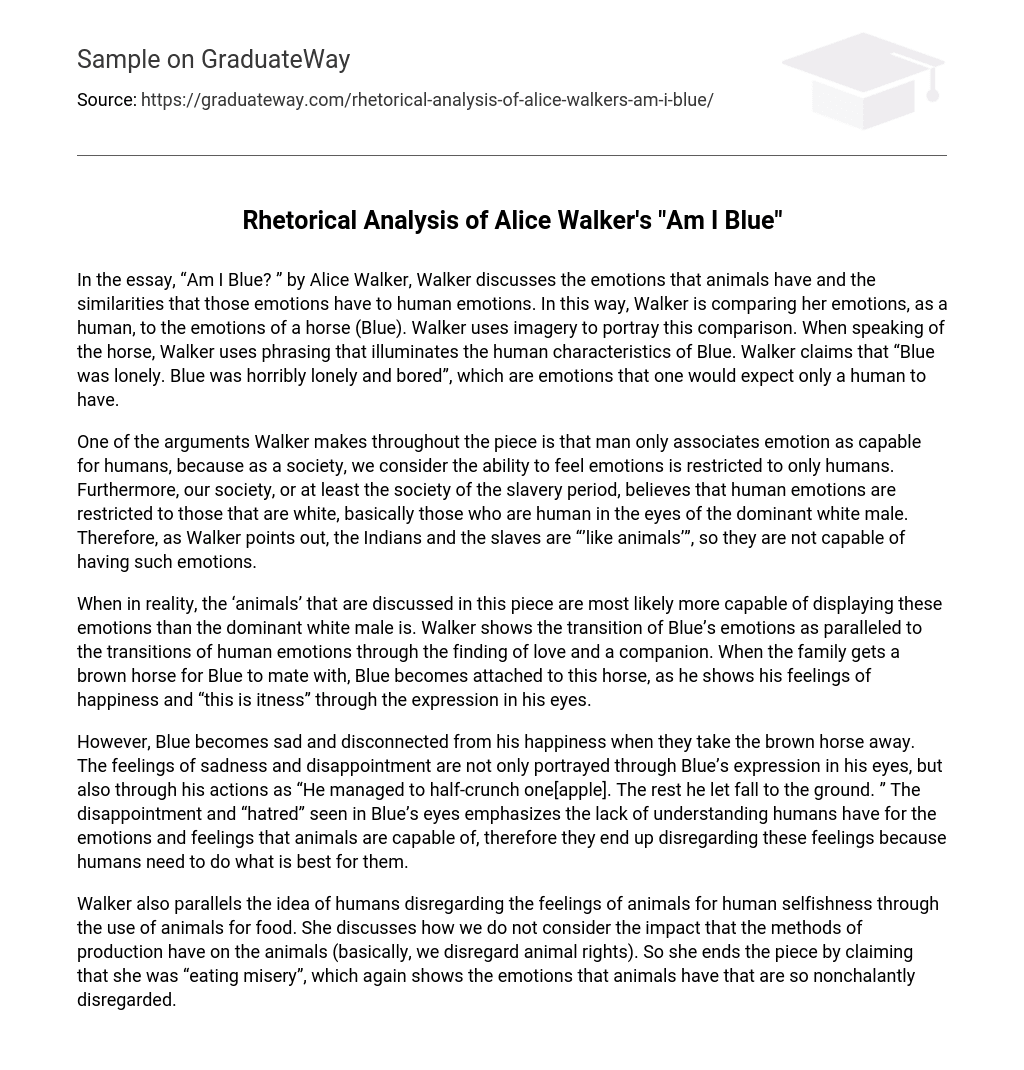In the essay, “Am I Blue? ” by Alice Walker, Walker discusses the emotions that animals have and the similarities that those emotions have to human emotions. In this way, Walker is comparing her emotions, as a human, to the emotions of a horse (Blue). Walker uses imagery to portray this comparison. When speaking of the horse, Walker uses phrasing that illuminates the human characteristics of Blue. Walker claims that “Blue was lonely. Blue was horribly lonely and bored”, which are emotions that one would expect only a human to have.
One of the arguments Walker makes throughout the piece is that man only associates emotion as capable for humans, because as a society, we consider the ability to feel emotions is restricted to only humans. Furthermore, our society, or at least the society of the slavery period, believes that human emotions are restricted to those that are white, basically those who are human in the eyes of the dominant white male. Therefore, as Walker points out, the Indians and the slaves are “’like animals’”, so they are not capable of having such emotions.
When in reality, the ‘animals’ that are discussed in this piece are most likely more capable of displaying these emotions than the dominant white male is. Walker shows the transition of Blue’s emotions as paralleled to the transitions of human emotions through the finding of love and a companion. When the family gets a brown horse for Blue to mate with, Blue becomes attached to this horse, as he shows his feelings of happiness and “this is itness” through the expression in his eyes.
However, Blue becomes sad and disconnected from his happiness when they take the brown horse away. The feelings of sadness and disappointment are not only portrayed through Blue’s expression in his eyes, but also through his actions as “He managed to half-crunch one[apple]. The rest he let fall to the ground. ” The disappointment and “hatred” seen in Blue’s eyes emphasizes the lack of understanding humans have for the emotions and feelings that animals are capable of, therefore they end up disregarding these feelings because humans need to do what is best for them.
Walker also parallels the idea of humans disregarding the feelings of animals for human selfishness through the use of animals for food. She discusses how we do not consider the impact that the methods of production have on the animals (basically, we disregard animal rights). So she ends the piece by claiming that she was “eating misery”, which again shows the emotions that animals have that are so nonchalantly disregarded.





